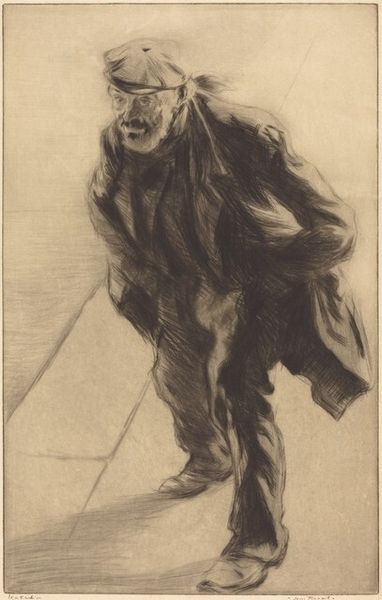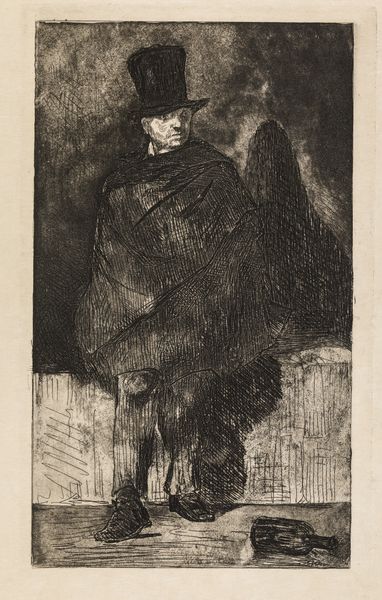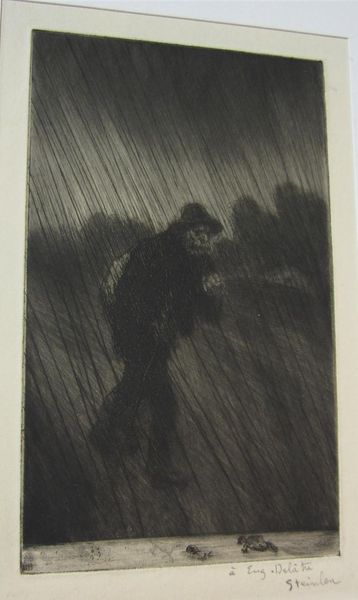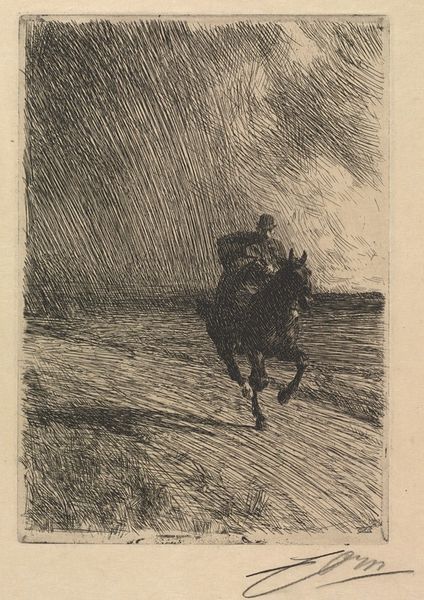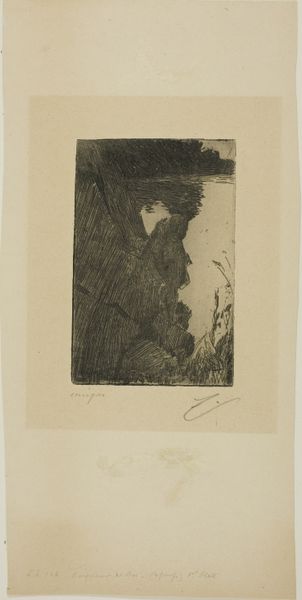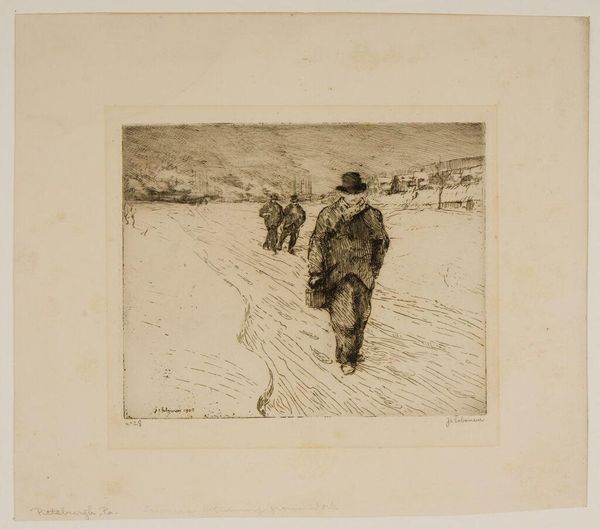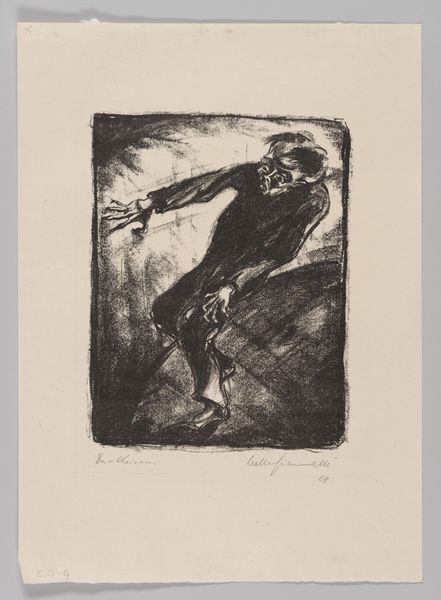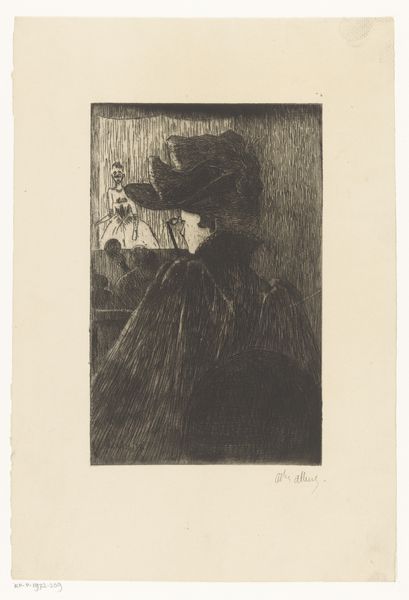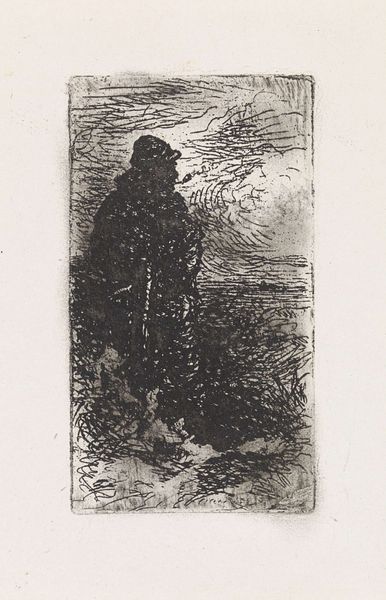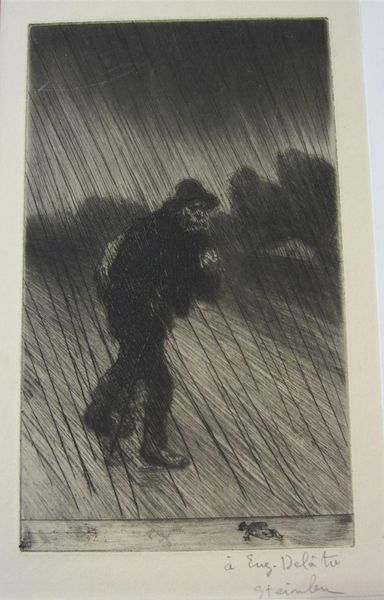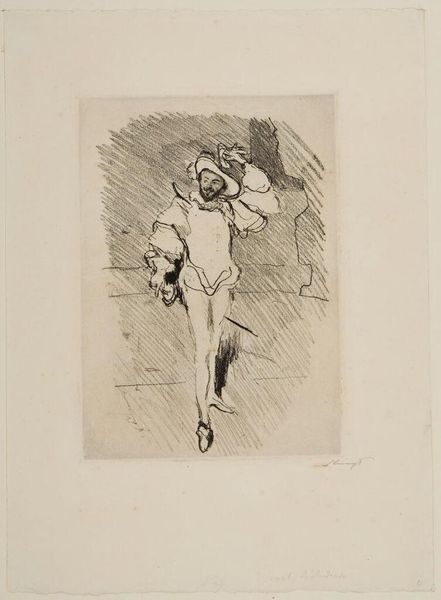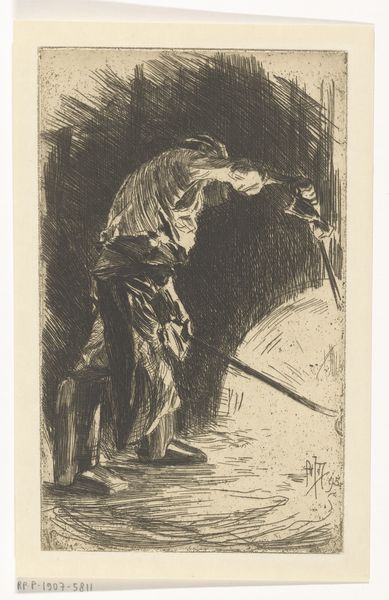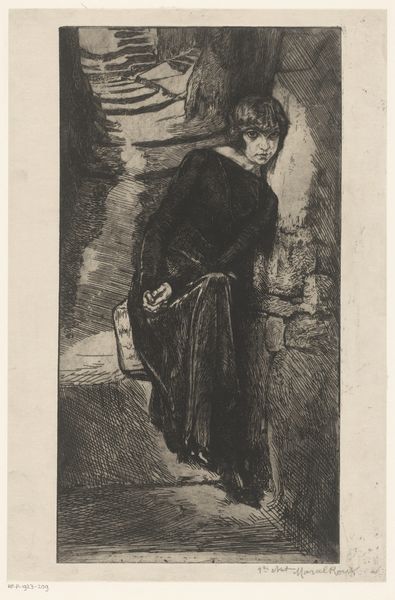
#
pencil drawn
#
light pencil work
#
pencil sketch
#
incomplete sketchy
#
charcoal drawing
#
possibly oil pastel
#
text
#
pencil drawing
#
tonal art
#
remaining negative space
#
watercolor
Copyright: Public domain
Curator: The artwork before us is Théophile Alexandre Steinlen’s "Vagabond Sous La Neige," created around 1902. The piece seems to utilize charcoal and pencil to achieve its affecting atmosphere. Editor: My initial reaction is the immediacy. It's almost painful; the sketchiness amplifies the man's struggle. The stark black against the white of the paper emphasizes the vagabond's vulnerability in the storm. Curator: Yes, the formal structure enhances the raw emotional content. Observe how Steinlen uses the hatching to suggest the oppressive weight of the snow. It blankets the figure, but simultaneously dissolves parts of him back into the setting. We see this figure and the snow surrounding him, equally. Editor: Absolutely. And beyond the technique, the work embodies the plight of the urban poor in turn-of-the-century Paris, particularly given Steinlen’s affiliations with leftist political movements and periodicals like "Le Chat Noir." Curator: I agree completely about his interest in Parisian society at this period. The dynamism and realism captured through its relatively simple form is significant. I’d point specifically to how his left foot turns slightly inward—a very deliberate and precise construction for such a fleeting character. Editor: Precisely. It places the focus of art on these social actors who were routinely ignored in French art, marking him not simply as a subject of social commentary but as a modern artistic subject too. Curator: We might also note the tension between the details in his coat or hat compared to his obscured face: it leaves room for broader interpretation by turning the specific into the more broadly allegorical. Editor: It offers a critical perspective on societal indifference to poverty; viewers from different social positions in France in 1902 surely interpreted that image in drastically different ways, shaped by the material conditions and pressures of their everyday experience. Curator: I am struck, considering all the levels we’ve seen, with the elegance and potency the artist distills. Editor: This was such a fruitful examination: tracing technique to arrive at context, Steinlen creates more than just an image—he builds an empathy and promotes crucial debate.
Comments
No comments
Be the first to comment and join the conversation on the ultimate creative platform.
